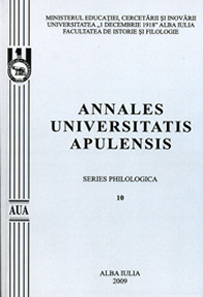Patriarchy, Science and Spirituality in Jeanette Winterson’s “Gut Symmetries”
Patriarchy, Science and Spirituality in Jeanette Winterson’s “Gut Symmetries”
Author(s): Zeynep Yilmaz KurtSubject(s): Literary Texts
Published by: Universitatea »1 Decembrie 1918« Alba Iulia
Keywords: Jeanette Winterson’s Gut Symmetries; feminism; quantum physics; relativity; mysticism
Summary/Abstract: The contemporary English novelist Jeanette Winterson holds a feminist mirror to the predominant patterns of life resulting from grand narratives in her novels that combine a variety of disciplines within their narrative structure. Gut Symmetries (1997) in particular, “interweaves the various discourses of alchemy, Einsteinian physics, Superstring Theory, the Tarot, and Jewish Kabbala”. The main character Alice, a successful young physicist, admits a loss of identity in return for her intellectual success. She attains access to, and success in physics, which she chooses to achieve a “certain” understanding of the universe, at the cost of her feminity. As the only way to prove her intelligence Alice rejects her mother as a role model, and identifies herself, paradoxically, with her father since her childhood. Alice realizes her identity problems only when she gets involved into a love triangle after she falls in love with Jove, another physicist with whom she worked on a project, and Jove’s wife, Stella, whom she met in America. With their opposing characters, Jove and Stella represent not only the clash between men and women’s ontological beings, but the clash of science with spirituality also. With a simple word play upon the “Gut” of the title, standing both for Grand Unified Theory and the human emotions, Winterson brings in several themes that she discusses within the discourse of a variety of disciplines. She refers to Jove’s ambitious devotion to “Superstring Theory”, as opposed to “Standard Model”, as a successful scientist, to reveal his desire for only one “true” theory underlying cosmos. Through its claim at objectivity, scientific method reduces reality into one truth only, as a means of male desire for power. Stella, whose subjectivity and relativity are defined as “pathological” by Jove, represents subjective reality that is associated with feminity. This paper aims, in this context, to discuss Jeanette Winterson’s Gut Symmetries as a novel interconnecting the scientific discourse of physics with its narrative structure to reveal the materiality of the oppressive masculine power as opposed to the relativist feminine spirituality. Her conscious choice of two physicists, one masculine and the other feminine, provides her with a background for the discussion of the ground breaking twentieth century theories of relativity and quantum physics as opposed to traditional grand narratives. Alice’s gradual realisation of her identity crisis resulting from the denial of her feminity in favour of social approval in the foreground, leads her from Jove’s masculine realm of scientific methodology into Stella’s feminine realm of spirituality. Alice gets over her identity crisis only by balancing the physical with the metaphysical, the material with the spiritual.
Journal: Annales Universitatis Apulensis. Series Philologica
- Issue Year: 11/2010
- Issue No: 2
- Page Range: 80-90
- Page Count: 11
- Language: English

